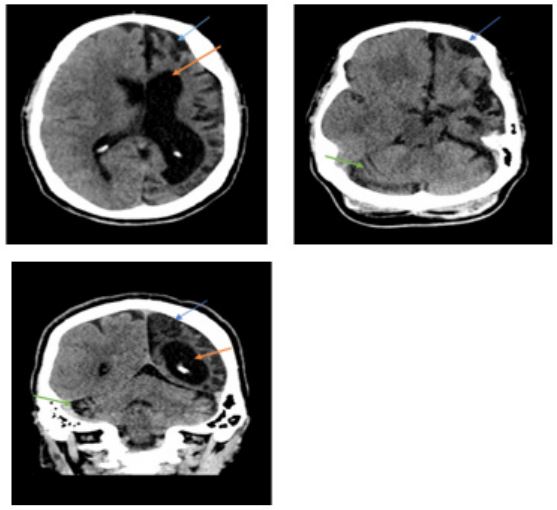Clinical Image - Volume 2 - Issue 5
HHE syndrome? What does it mean?s
Sfar Kaouthar*; F Jaheddine; O Eloufir; C Ayadi; M Zhim; M Jidane; F Touarsa
*Department of Neuro-radiology, Hospital of Specialties, Mohamed V University, Rabat, Morocco.
Received Date : Aug 24, 2022
Accepted Date : Sep 24, 2022
Published Date: Oct 04, 2022
Copyright:© Sfar Kaouthar 2022
*Corresponding Author : Sfar Kaouthar, Department of Neuro-radiology,Hospital of Specialties, Mohamed V University, Rabat, Morocco.
Email:sfarkaouthar5@gmail.com
DOI: Doi.org/10.55920/2771-019X/1257
Case
The hemiconvulsion-hemiplegia-epilepsy syndrome (HHE) is a partial epilepsy [1], first described by GASTAUT et al. in 1957 [2]. This syndrome, which has become rare, occurs in children under 4 years of age [1, 2]. Its exact etiopathogenesis remains poorly defined. Therefore, the authors consider that a viral infection can cause vascular disorders which, in turn, lead to ischemic lesions explaining the installation of hemiplegia, convulsive seizures, and cytotoxic edema. Others explain these lesions by the recurrence of convulsive seizures or status epilepticus [3].
Clinically, the patient presents a complex febrile seizure followed by a flaccid hemiplegia which is later complicated by epilepsy consisting of partial convulsive seizures [2]. In cross-sectional imaging (CT/MRI), there is a global hemispheric asymmetry, marked by a widening of the cortical furrows of the cerebral hemisphere (contralateral to the deficient side), a diffuse cortical atrophy, a dilation of the homolateral VL, and an atrophy of the contralateral cerebellar hemisphere (Figure 1).
Figure 1: Brain CT of a patient with HHE syndrome, showing cerebral atrophy contralateral to the deficient side (blue arrow), with dilation of the ventricular system (orange arrow) and atrophy of the contralateral cerebellar hemisphere(green arrow).
Medical treatment is based on antiepileptics [1] to prevent recurrence after the first seizure. The prospect of surgical treatment remains the last resort in severe drug-resistant epilepsies during HHE syndrome [2]. The prognosis is variable; Cognitive and behavioral disorders with mental retardation have been reported as complications of HHE syndrome [2].
References
- O El Aoufir, W Bnouhanna, MR El Hassani, M Jidane, M Fikri. Hemiconvulsion-hemiplegia-epilepsy syndrome. Presse Med Form 2020; 1: 218–219.
- Bourrous M, Lagmiri K, Amine M, Abidi M, Bouskraoui M. The hemiconvulsion-hemiplegia-epilepsy syndrome of the children. Journal de pédiatrie et de puériculture 2010; 23(6): 322–7.
- Toldo I, Calderone M, Boniver C, Dravet C, Guerrini R, Laverda AM. Hemiconvulsion-hemiplegia-epilepsy syndrome: Early magnetic reso- nance imaging findings and neuroradiological follow-up. Brain and Development 2007; 29(2): 109–11


